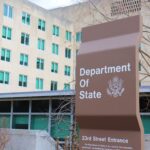AILA member Geoffrey A. Hoffman wrote an article for the Spring 2022 edition of the AILA Law Journal entitled “Reading Pereira and Niz-Chavez as Jurisdictional Cases” In this blog post he reflects on the issue of jurisdiction and how it could play a crucial part in resolving and reducing the 1.6 million case backlog. AILA members, don’t forget you have digital access to all Law Journal editions on aila.org!
In my piece in the AILA Law Journal Spring 2022 edition, Reading Pereira and Niz-Chavez as Jurisdictional Cases, I tackled a difficult topic: the jurisdiction of the immigration courts. As we know, in most contexts jurisdiction must be decided at the outset of any litigation. It is usually the first thing that must be established before a court can proceed to hear a case. In the Article III federal court system, for example, those are courts of “limited jurisdiction,” and the types of cases that can be brought are carefully proscribed by statute and the Constitution. In fact, just recently we saw Judge Ketanji Brown Jackson eloquently and correctly make this point in her Supreme Court confirmation hearing.
However, in the immigration court context, jurisdictional issues are only spelled out explicitly in the regulations, as well as determined by language in the INA, the governing statute. Arguably, there should be no controversy that a valid Notice to Appear (NTA) must be filed with the immigration court. But, the defective NTA cases in the Supreme Court to date have not clearly determined the jurisdictional issue. Determination of this issue presents significant ramifications for respondents in immigration court proceedings, because if arguably no jurisdiction existed for the courts to hear these cases, then litigants may be able to reopen their proceedings, given appropriate safeguards in the future.
I decided to tackle this complicated issue for several reasons. First, the integrity of immigration courts, I think, is best protected when we have clear rules surrounding such bedrock issues as jurisdiction. There is, as we know, a push right now for an Article I immigration court. Witness just recently, the proposed “Real Courts, Rule of Law Act of 2022,” put forward by Representative Lofgren. Second, I see lot of confusion surrounding the defective NTAs cases in how attorneys are trying to deal with the fall-out from the Supreme Court’s decisions. Issues abound regarding how far the Supreme Court meant to go in Pereira and Niz-Chavez. Take for example, the Fifth Circuit’s recent cases extending Niz-Chavez, for example, to “in absentia,” and voluntary departure cases. Both of these cases show the Fifth Circuit is leading the way in resolving some important issues concerning the scope of Niz-Chavez, and they will also serve to protect some respondents who may have otherwise had no relief.
Finally, I think the defective NTA-jurisdictional question plays a crucial part in resolving and reducing the 1.6 million case backlog. As I noted in my article, indicating the time and place of hearing on the NTA was supposed to be the rule, not the exception. It became the “exception” perhaps through a lack of agency communication or cooperation. If we can recognize some of the shortcomings of the present system regarding the preparation, service, and filing of NTAs and the notice system for immigration court hearings, then I think we might significantly aid in resolving the current backlog. Additionally, the history of the changes in the law and regulations regarding indication of the time and place of hearing on the charging document was not adequately covered in the existing literature.







